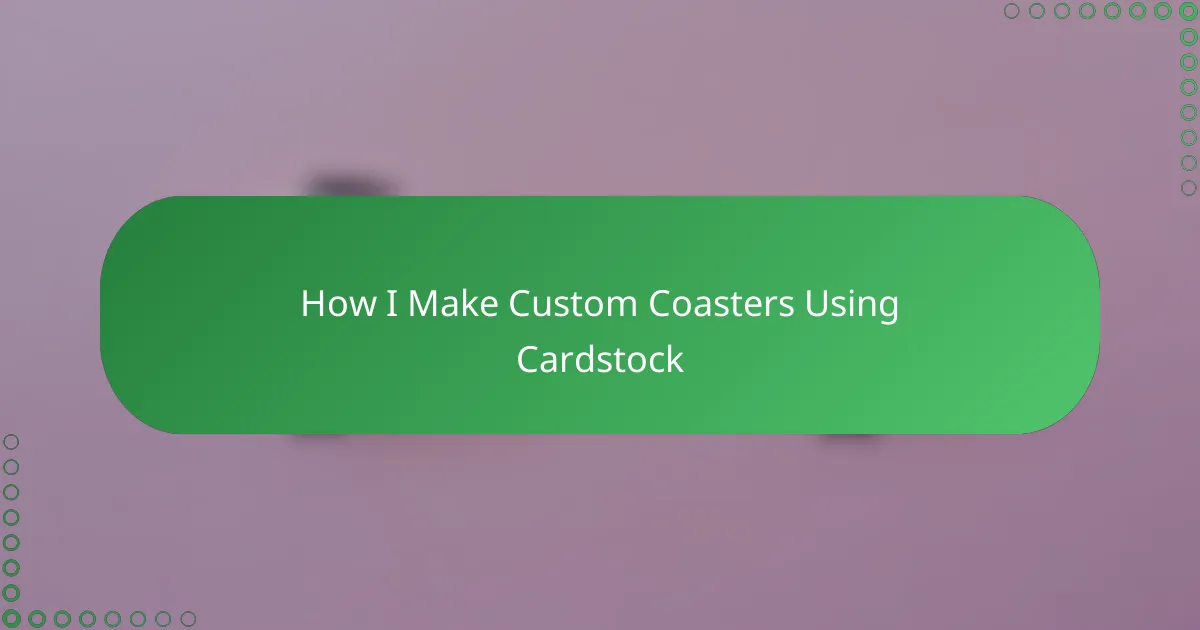Key takeaways
- Handmade paper crafts allow for creative expression and personal storytelling through unique designs and textures.
- Choosing sturdy cardstock, using strong adhesives, and sealing finished projects are crucial for creating durable and functional coasters.
- Incorporating personal themes, typography, and color mixing can enhance the design and meaning of each coaster.
- Adding a protective backing, such as cork or felt, improves stability and prevents damage to surfaces while enhancing the coaster’s practicality.

Introduction to Handmade Paper Crafts
Handmade paper crafts have always fascinated me because they blend creativity with a simple, everyday material—paper. There’s something incredibly satisfying about transforming a plain sheet of cardstock into a unique piece of art, don’t you think? For me, it’s not just about crafting; it’s about the joy of bringing imagination to life one fold, cut, or glue at a time.
Working with handmade paper crafts is more than a hobby—it’s a calming ritual that connects me to the tactile world. Have you ever noticed how the texture of paper and the sound it makes when you handle it can make the creative process feel almost meditative? That sensory experience makes every project feel personal, even if it’s something as small as a coaster.
What I love most is that handmade paper crafts invite endless possibilities. Whether it’s experimenting with colors, shapes, or layers, each project reflects a part of who you are. Isn’t it amazing how something so simple can hold such a meaningful story?
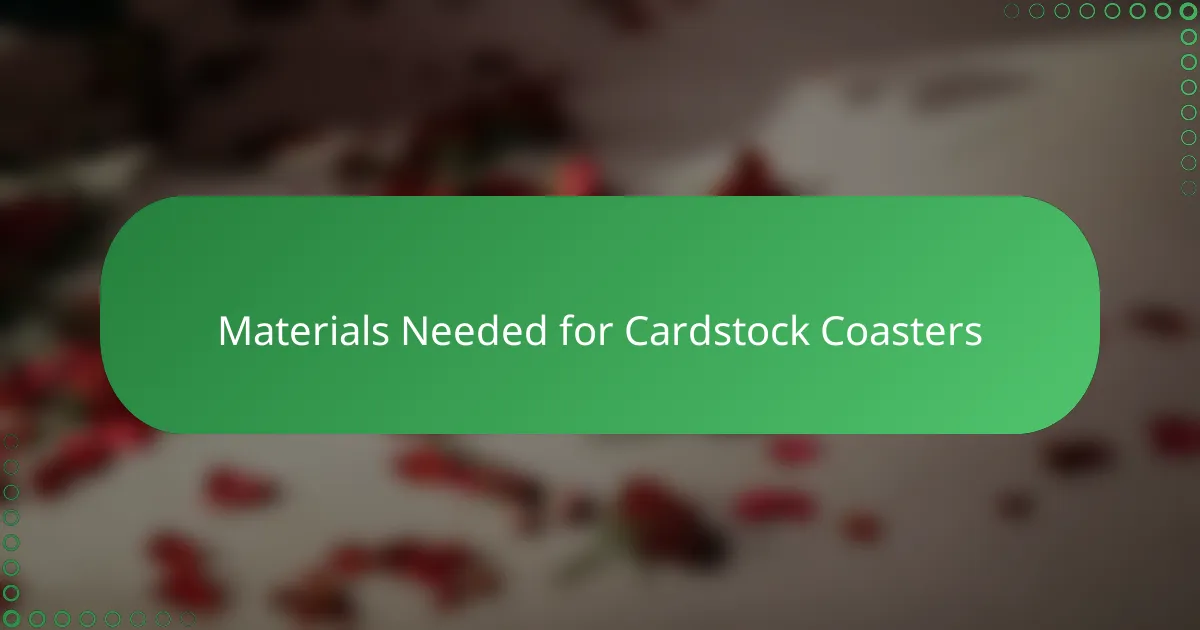
Materials Needed for Cardstock Coasters
When I first started making cardstock coasters, gathering the right materials felt like setting up for a small adventure. Of course, sturdy cardstock is the foundation—it needs to be thick enough to handle moisture without warping. I usually choose cardstock around 80-100 lb weight because it strikes that perfect balance between durability and ease of cutting.
Aside from cardstock, I always keep adhesive close by—double-sided tape or glue sticks work well for me. I’ve found that a strong bond keeps the coaster layers from peeling apart after a few uses. Sometimes I add a waterproof sealant, especially when I know the coaster will see a lot of drinks with condensation. Have you found any sealants that work particularly well? For me, a matte finish spray keeps the look natural while protecting the paper.
Cutting tools are another must-have. I swear by a sharp craft knife and a metal ruler; they help me get those clean, precise edges that make the coasters look professionally crafted. And here’s a little trick I learned: always work on a self-healing cutting mat. It saves your table and gives me peace of mind to experiment without worrying about damage. What small tools or hacks have you discovered in your paper crafting journey?
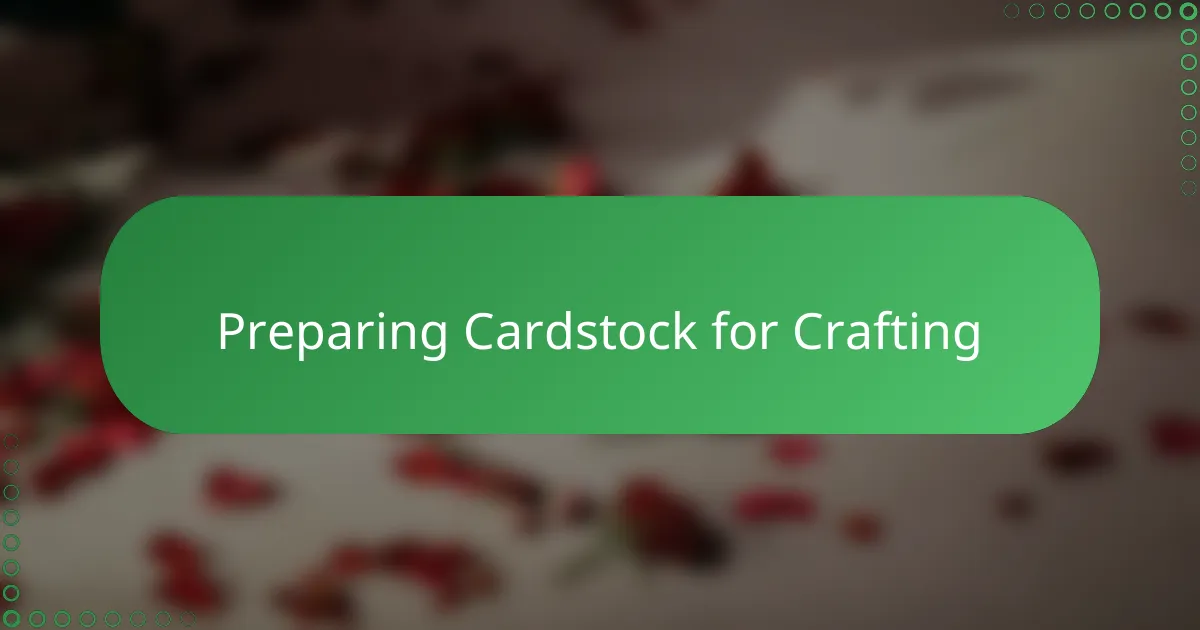
Preparing Cardstock for Crafting
Before diving into cutting or decorating the cardstock, I always spend a moment feeling its texture and checking its sturdiness. Have you noticed how some cardstock feels just right—thick enough to be durable, yet smooth enough to handle intricate designs? Choosing the right sheet sets the tone for the whole project, and I never rush this step.
Next, I make sure the cardstock is free from wrinkles or bends that could throw off my measurements. Sometimes, I gently press a bent sheet under a heavy book overnight; it’s amazing how a little patience can save a project from looking lumpy or uneven. Do you have any tricks for flattening your papers before crafting?
Finally, trimming the cardstock precisely to size is where my favorite tools come into play. Using a sharp craft knife and a metal ruler helps me slice clean edges that instantly elevate the look of the coaster. It might seem like a small detail, but trust me, those crisp lines make a big difference—you feel like a pro with every cut you make.
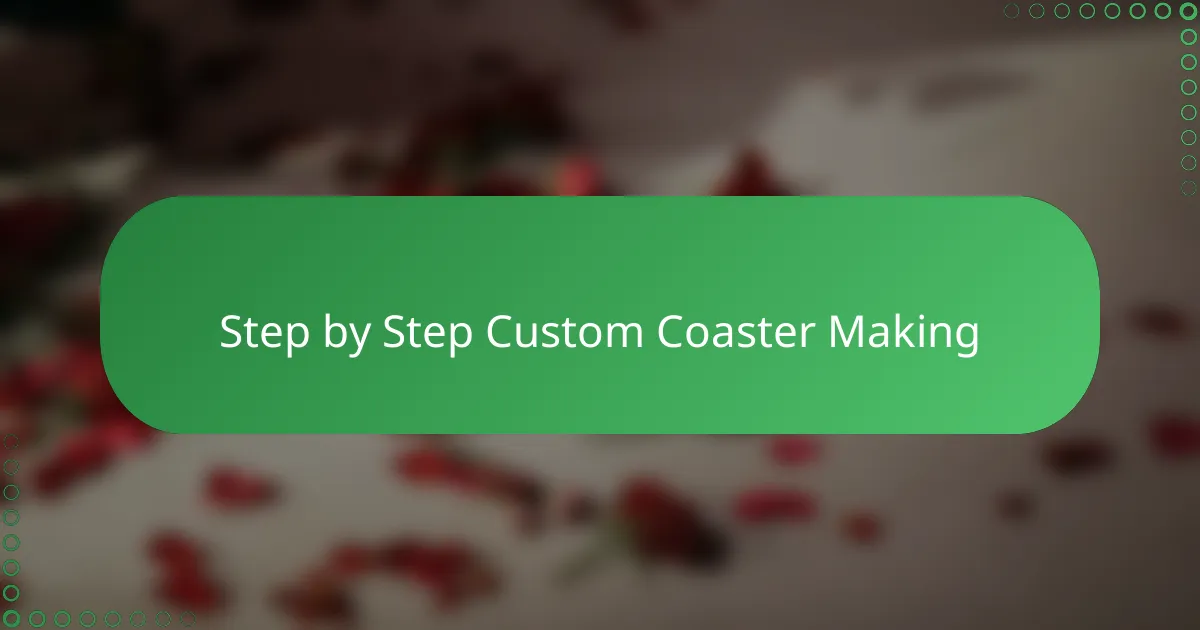
Step by Step Custom Coaster Making
Starting with cutting your cardstock into equal squares or circles is where the magic begins for me. I always measure twice—sometimes even thrice—before making the first cut, because precision here means your coasters will look polished and uniform. Have you ever felt that small thrill when those neatly cut shapes are all lined up, ready to become something special?
Once the shapes are ready, layering is my favorite part—it’s like building a tiny paper fortress. I carefully glue each layer, smoothing out any bubbles or wrinkles, because nothing ruins the vibe faster than a lumpy edge. Do you enjoy this step as much as I do, when the coaster starts to feel sturdy and substantial beneath your fingers?
Sealing the finished coaster is the final touch that I never skip. Spraying a protective coat feels like adding armor that keeps my creation safe from spills and wear. It’s satisfying to know that this little paper craft will hold up through many cups of coffee. What kind of sealant have you found works best to keep your coasters looking fresh and vibrant?
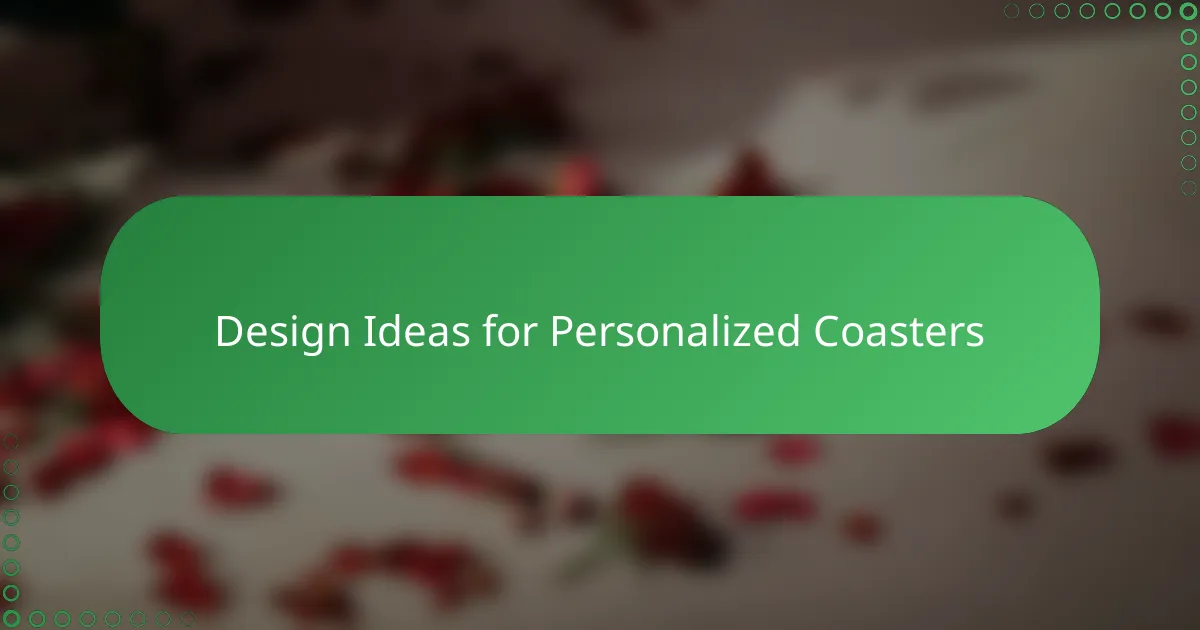
Design Ideas for Personalized Coasters
When it comes to design ideas for personalized coasters, I often start with themes that resonate personally—like floral patterns that remind me of my grandmother’s garden or geometric shapes that bring a modern touch to my living room. Have you ever noticed how a simple motif can make your coasters feel like tiny windows into your own story? Adding hand-drawn doodles or stamped images is another way I channel my creativity and make each piece uniquely mine.
Sometimes, I like playing with typography on my coasters—fun quotes, names, or even little cheers like “Sip, sip, hooray!” It’s amazing how just a few words can spark a smile or start a conversation when guests notice them. What phrases or words would you choose for your coasters that say something meaningful or playful?
Color choice also plays a huge role in my designs. Mixing bold colors with neutrals or creating ombre effects can turn a simple coaster into a vibrant statement piece. Have you experimented with layering translucent colors over textured cardstock? It’s a thrilling way to add depth and surprise to each coaster, making them feel truly one-of-a-kind.
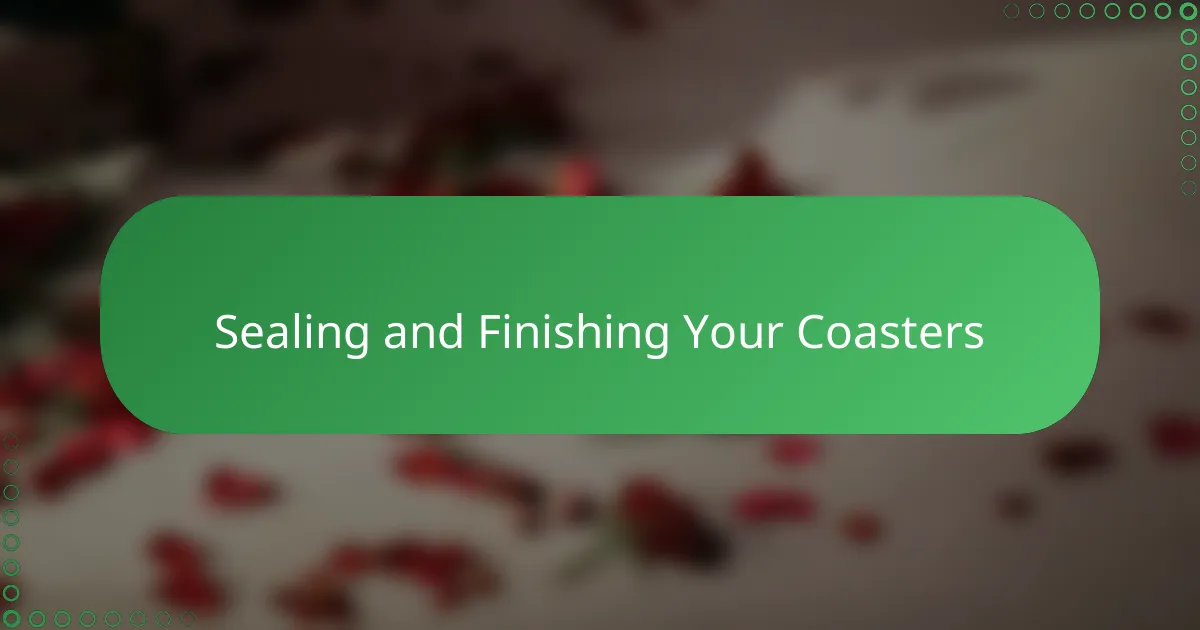
Sealing and Finishing Your Coasters
Sealing your cardstock coasters is a step I never overlook because it’s what truly protects my hard work from moisture and wear. I usually reach for a matte sealant spray—it keeps the paper looking natural while shielding it from spills. Have you noticed how the right finish can make your coaster feel almost professional, extending its life without changing its charm?
I remember the first time I skipped sealing, and a coffee ring instantly soaked through, ruining the whole piece. That experience taught me that sealing isn’t just a precaution—it’s essential. It’s satisfying to see my coasters with that subtle, protective layer, knowing they’ll stay vibrant and strong through countless cups.
Finishing touches like adding felt pads or cork backing also make a big difference. Not only do they prevent scratches on my furniture, but they add a nice weight and stability to the coaster. Have you tried this before? Even a simple addition like this can elevate a handmade coaster from pretty to practical.
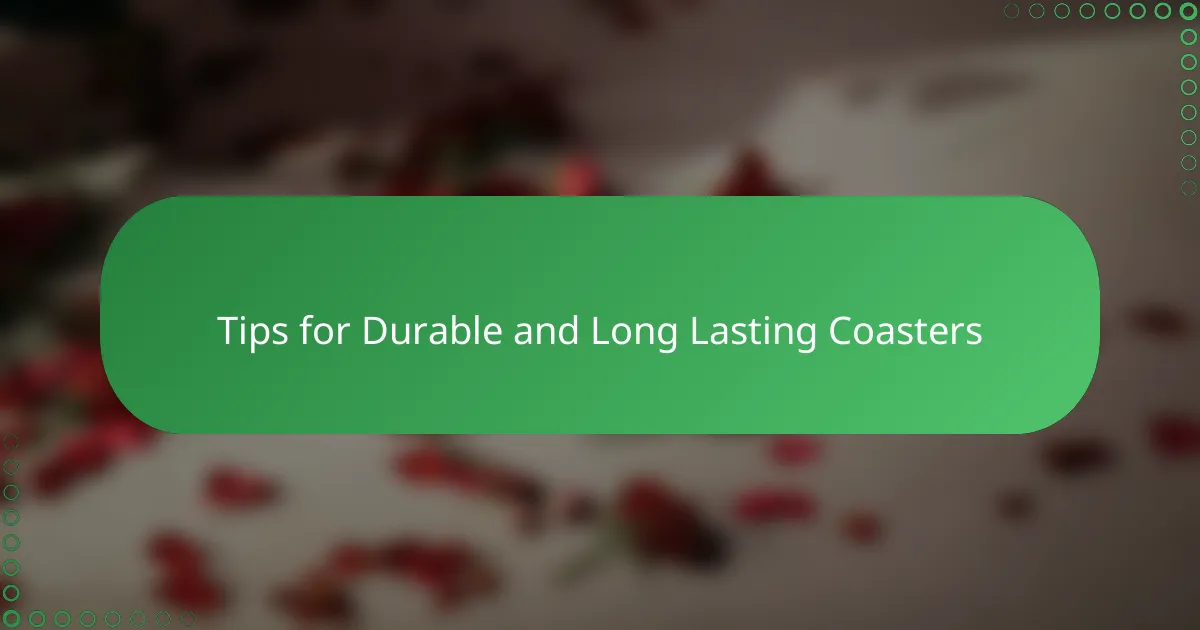
Tips for Durable and Long Lasting Coasters
When I first started making cardstock coasters, I quickly learned that durability hinges on quality materials and smart layering. Using heavyweight cardstock is a no-brainer—it needs to hold up against spills and condensation. Have you ever tried doubling or even tripling your cardstock layers? For me, that extra thickness transforms a flimsy piece into something sturdy enough to last, almost like building a paper shield for your drinks.
Sealing is where my coasters truly gain longevity. I remember a batch that wasn’t sealed properly; a rogue coffee ring left a permanent stain, and that stung. Since then, I swear by a matte sealant spray—it guards against moisture without stealing the natural paper feel. Isn’t it amazing how a simple spray can protect the delicate layers beneath and keep your coasters looking fresh for months?
Lastly, I always add a backing of cork or felt—not just for aesthetics but for protection. It prevents the coaster from sliding and keeps moisture from reaching the table surface. Have you tried this little trick? It’s a small step that makes a big difference, turning a pretty paper craft into a practical everyday companion.
